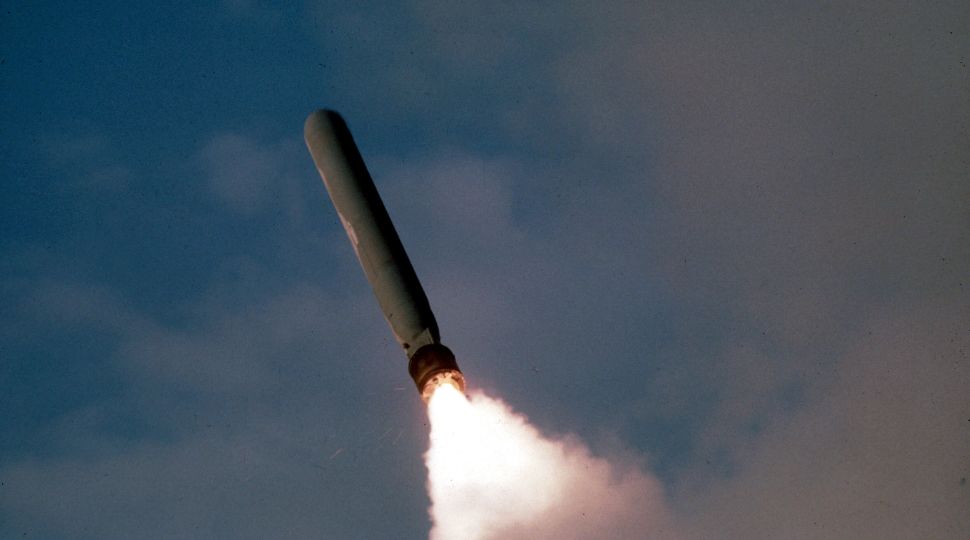The Future of U.S.-Russia Strategic Arms Control

This year, the U.S. is expected to announce whether it will seek to extend the NST, which was signed with Russia in 2010. NST is set to expire on 5 February 2021 but can be extended for up to five years if both signatories agree. If not, and the U.S. and Russia do not sign another treaty, their nuclear forces will not be under any legally binding limits for the first time in several decades. Each of the NST parties may have up to 700 deployed (i.e., operational) nuclear delivery vehicles with an intercontinental range of more than 5,500 km—heavy bombers and land-based and submarine-launched ballistic missiles. These forces may carry up to 1,550 deployed warheads.
U.S. Position
While the American administration does not rule out an extension of the NST, it is averse to it. Its main goal is to negotiate a new accord involving not just Russia but also China. President Donald Trump himself has expressed this desire publicly and criticized the NST, as with many other agreements concluded by his predecessors. Trump administration officials question the point of extending NST in light of Russia’s expansion of nuclear forces not covered by this treaty and its violations of other agreements, especially the Intermediate-range Nuclear Forces (INF) Treaty. These issues also have been brought up by high-ranking U.S. military commanders, although they support the NST, underscoring that it increases mutual predictability and gives insight into Russian nuclear forces through the verification regime based on data exchanges and on-site inspections.
The Trump administration wants the next agreement (or at least a modified NST) to cover new Russian strategic systems capable of intercontinental strikes on the U.S. but which do not fall under the definitions and limits of the NST—the Poseidon (NATO: Kanyon) underwater drone and the Burevestnik (NATO: Skyfall) cruise missile, which are both nuclear-powered vehicles. The U.S. also seeks to constrain the large Russian arsenal of non-strategic nuclear weapons (with ranges below 5,500 km) whose delivery vehicles are not only being modernised but also reinforced with additional types of weapons. These systems are capable of striking U.S. allies and forward-deployed forces in Europe and Asia. Under certain circumstances, some non-strategic weapons could also target American territory (e.g., cruise missiles could be launched from submarines in proximity to the U.S.).
So far, however, the U.S. has not presented a more detailed concept of the new treaty, especially as regards the role of China. Despite the insistence on a trilateral deal, Trump has recently allowed for the possibility of concluding it at a later stage, following a bilateral U.S.-Russia accord. This may be related to China’s rejection of the U.S. demands as the former has long refused to join nuclear arms reduction agreements due to the disparities in their nuclear arsenals. Although the Chinese nuclear forces are increasing, they are still fewer than the U.S. and Russian arsenals (the Federation of American Scientists estimates that China has around 290 nuclear warheads, while the U.S. and Russian stockpiles include about 3,800 and 4,490 warheads, respectively).
Russia’s Position
Russia declares its readiness for the immediate and unconditional extension of NST but excludes changing the treaty to include the Burevestnik and Poseidon platforms (even though both systems are unlikely to enter into service in large numbers before 2026). Russia claims these weapons must be regulated in a new agreement and that there is not enough time to negotiate it before NST expires. Moreover, Russia conditions the conclusion of such an accord on the limitation of U.S. missile defences and conventional precision-strike systems. The first demand, especially, would encounter strong resistance within the U.S. Congress, particularly among Republicans. Russia had made similar demands in 2013 when it rejected a proposal to reduce its strategic forces below the NST levels and cut non-strategic nuclear weapons. While Russia has been calling for multilateral arms control talks (and insists on the participation of France and the United Kingdom), it is not going to pressure China in this regard.
Russia’s stance indicates that while it is interested in extending the NST, it is not overly concerned about the consequences of the treaty’s expiration. It is possibly hoping that such a development will increase the U.S. willingness to make concessions during talks on a new agreement, especially in case of political changes in the U.S. after the 2020 elections. This is indicated by both a willingness to use Burevestnik and Poseidon as bargaining chips and signalling by Russia that it might be impossible to extend NST under a different president who would come into office in January 2021, some two weeks before the accord’s expiry. It is doubtful that approval of an NST extension by the Russian Duma could take even several months, as argued by the Russian government.
Controversies in the U.S. Congress
NST extension is pursed by Congressional Democrats, who argue the Trump administration is abandoning arms control and undermining the compromise on U.S. nuclear policy. The latter was struck in 2010 during the NST ratification process. The majority of Republicans have criticised the treaty but some eventually backed it in return for a commitment by the Obama administration to invest in the modernisation of nuclear forces. Democrats accuse the Trump administration of the cynical promotion of a broader deal with Russia and China as a false alternative to NST because it is impossible to achieve, at least in the short term. They also cite the break in the strategic security dialogue with Russia between July 2019 and January 2020 and lack of similar talks with China (the Trump administration offered the latter only in December) as proof of bad faith from the executive branch. They also criticised the U.S. withdrawal from the INF treaty in August as reckless. The growing political divisions on arms control overlap the growing objections of the Democrats regarding the costs of a complete renewal of U.S. nuclear forces—in 2017, the Congressional Budget Office estimated that together with expenditures on sustainment of existing arsenal, these plans would require spending $1.2 trillion by 2046—and the validity of some programmes.
Perspectives and Implications for NATO
Extension of the NST is the only feasible way to maintain the continuity of strategic arms control. The U.S. desire to constrain all types of nuclear weapons is well-founded but would require long and complicated negotiations with Russia, even if the U.S. temporarily abandoned the idea of a trilateral accord with China, which is currently unrealistic.
Should NST expire, it could be Russia that finds itself in a better military and political position, at least initially. Both countries would be able to quickly deploy additional warheads on existing ballistic missiles but Russia could also increase the current production of such new missiles. Meanwhile, new U.S. strategic systems are to begin entering service in the second half of this decade at the earliest. Moreover, while the U.S. has more financial capability, it is possible that the American build-up would be substantially restrained by Congressional disputes related to the NST’s expiry.
Russia also would strive to exploit the tensions within NATO that would result from the expiration of the NST. NATO members have long supported this treaty and many of them call for its extension. Together with the 2019 collapse of the INF treaty, the end of the NST would stoke European fears of a new nuclear arms race, which Russia would blame on the U.S. This could, in turn, make the discussions on the further adaptation of NATO deterrence more difficult. The Alliance also would be negatively affected by extreme impacts of the strategic arms control paralysis on American nuclear policy: difficulties with the modernisation of U.S. nuclear forces due to internal disputes, or increased spending on U.S. nuclear arms at the expense of conventional forces needed to defend Europe. Therefore, the optimal scenario for NATO would entail an extension of the NST paired with simultaneous U.S. talks on broader nuclear arms control with Russia and China.





